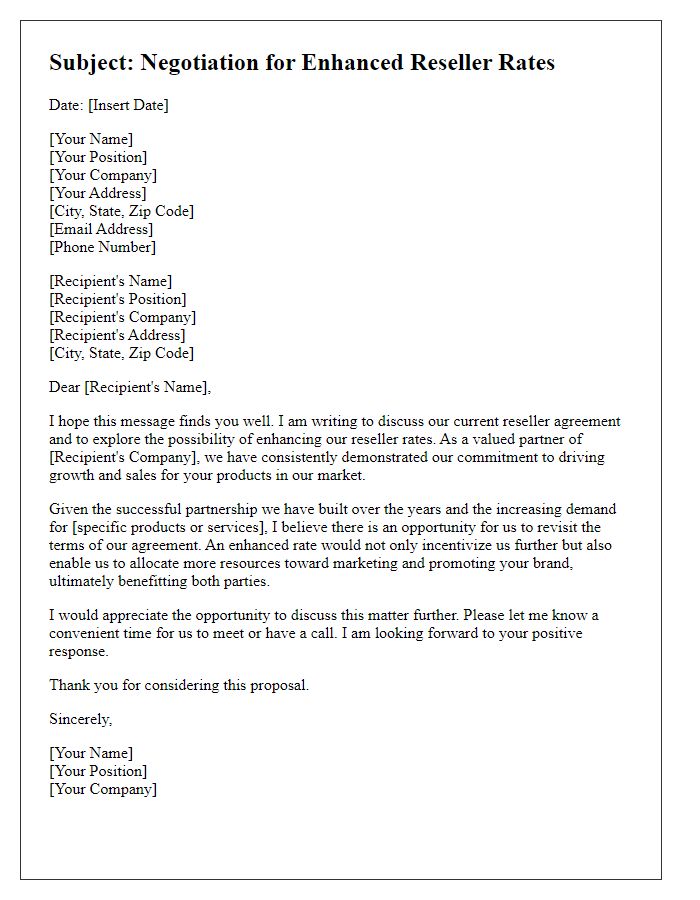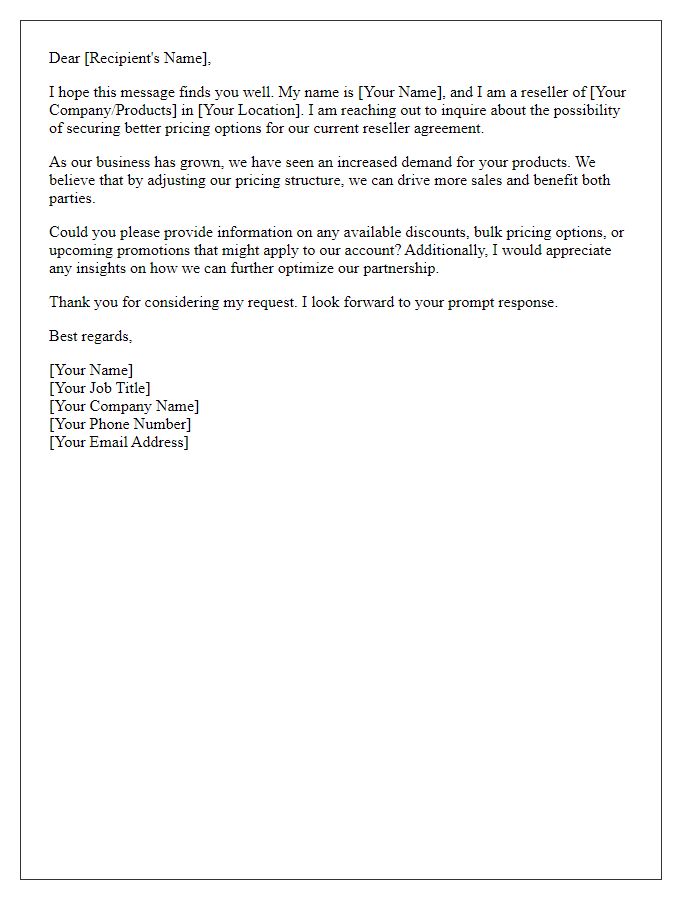Are you a reseller looking to negotiate better pricing with your suppliers? Crafting the right letter can make all the difference in securing those favorable terms. In this article, we'll guide you through a compelling letter template designed to enhance your negotiation strategy and bolster your business's profitability. Join us as we explore effective techniques and tips that will empower your negotiationsâkeep reading to unlock the secrets to success!

Greeting and Introductions
Effective reseller price negotiation involves clear communication and a strong introduction. Begin with a friendly greeting to establish rapport, addressing your contact by name to personalize the interaction. Introduce yourself and your company, highlighting relevant background information such as years in operation, market presence, or key products, to build credibility. Mention any existing partnerships or successful collaborations to further strengthen trust. Articulate your purpose clearly, focusing on the importance of discussing pricing structures that benefit both parties. Keep the tone professional yet approachable to create an open dialogue for negotiation.
Context and Purpose of Communication
The context of reseller price negotiation involves a business scenario where a retailer seeks to negotiate pricing terms with a wholesaler or supplier to acquire products at a lower cost, enhancing profit margins. This negotiation often occurs in industries such as electronics, apparel, or consumer goods, where competitive pricing strategies are crucial for market success. The purpose of communication in this context aims to establish mutually beneficial agreements that account for factors such as order volume, payment terms, and delivery schedules. Therefore, both parties aim to create a collaborative relationship that can lead to increased sales, improved inventory turnover rates, and a sustainable partnership, ultimately driving revenue growth and market share expansion.
Current Pricing Concerns
Reseller pricing strategies play a crucial role in maintaining competitive advantage in the retail market. Current pricing concerns can arise from various factors, including fluctuating supplier costs, market demand variations, or new competitive entrants. Retailers must analyze historical sales data, competitor pricing (consider entities like Walmart or Amazon), and customer feedback to determine optimal pricing adjustments. In sectors like electronics, where margins can be thin, effective negotiation with suppliers to secure favorable wholesale rates is vital in order to retain profitability while ensuring consumer satisfaction. Additionally, maintaining a transparent dialogue about current pricing challenges with stakeholders fosters trust and compliance in the supply chain.
Proposed Adjustments
Reseller price negotiation often focuses on achieving the most favorable pricing structure for maximum profitability. Critical elements in this discussion may include wholesale prices for bulk purchases, minimum order quantities, and payment terms. Resellers can suggest adjustments based on market analysis, competitor pricing strategies, and customer demand trends. Specific case scenarios such as seasonal promotions or product launches at retail locations can further justify proposed adjustments. Additionally, presenting data on previous sales performance and anticipated growth in specific regions can strengthen the negotiation position.
Closing Remarks and Call to Action
Reseller pricing strategies significantly impact overall profitability in competitive markets. Finalizing terms requires careful consideration of both product costs and market demand. Setting a clear discount structure can enhance collaboration and boost sales volume. Establishing a deadline for agreement, such as a specific date in November 2023, may encourage prompt decision-making. Highlighting benefits, including brand visibility and increased inventory turnover, inspires commitment. A follow-up communication channel increases urgency, ensuring both parties feel valued and engaged in the negotiation process.













Comments